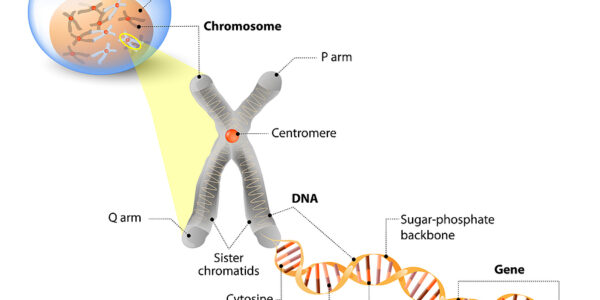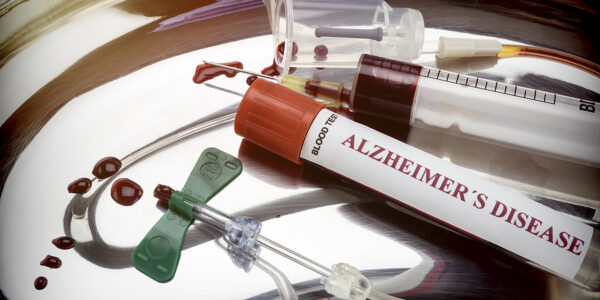A recent publication stated that common drugs have a connection to dementia risk. The study had an observation time of 12 years (from 2004 to 2016) and involved 284,343 patients in the United Kingdom. There is a group of drugs, namely anticholinergic drugs, that were particularly strong with regard to causing side effects of dementia. A variety of anticholinergic drugs exist, such as antidepressants like paroxetine or amitriptyline. But there are other anticholinergic drugs like bladder antispasmodics (they also go by the name bladder antimuscarinics, such as oxybutynin or tolterodine). Other anticholinergic medications are antipsychotics that are in use for psychotic diseases. Examples are chlorpromazine or olanzapine. Anti-epileptic drugs also belong into the anticholinergic drug group. Common anti-epileptic drugs are oxcarbazepine or carbamazepine.
The researchers found that 58,769 of the patients that took strong long-term anticholinergic medication developed a dementia diagnosis.
More about the study
The researchers found that the risk of developing dementia for those who consumed only a few anticholinergic drugs was low. It amounted to only 6%. In contrast, patients who took a lot of anticholinergic drugs at least for 3 years or more developed dementia in 49% of all cases, which is quite a significant amount.
Dr. Douglas Scharre, director of the division of cognitive neurology at the Ohio State University Wexner Medical Center in Columbus was not involved in the study. He said: ”I spend a lot of my time in the memory disorder clinic seeing geriatric patients and taking people off medications, mostly those medications that have anticholinergic properties. Many times there can be another drug out there that has less anticholinergic impact or is non-anticholinergic that may work.”
Risk-benefit discussion
He went on to say that some drugs are really necessary to control a psychosis or seizures, so it is a matter of discussing with the physician whether it is worth taking a risk of possible dementia versus a risk of a flare-up of psychosis or of a seizure.
More statistics
Patients who received treatment for depression with anticholinergic antidepressants had a risk of 29% of developing dementia. Anticholinergic anti-Parkinson drugs had an association of a rate of 52% of dementia. Anti-psychotic drugs led to dementia in 70% of the treated cases. Bladder relaxing medications (medically called antimuscarinic drugs) had a risk of 65% to cause dementia. Finally, anti-epileptic drugs had a risk of causing dementia in 39%.
The researchers noted that these findings highlight how important it is reducing exposure to anticholinergic drugs in middle-aged and older people.
Serious side effects from other medication
Unfortunately there is a history of serious side effects regarding several medications.
Tardive dyskinesia with antipsychotics
Long-term treatment of schizophrenia with antipsychotic drugs can cause severe side effects. One of the more severe side effects is tardive dyskinesia, which occurs in 5% per year of antipsychotic medication use, and in about 1%-2% of these it is severely disfiguring the face. Tardive dyskinesia can lead to permanent involuntary movements of the muscles around the mouth and the eyes. The jaw and the tongue may also show involuntary movements, and in time this leads to a disfigured look of the face, often with asymmetries between the right and left side of the face. Unfortunately, withdrawal of the antipsychotic medications will not improve the tardive dyskinesia. Often expensive lifelong Botox injection therapy every 6 to 8 weeks is necessary to alleviate some of the effects of this devastating dyskinesia.
Side effects from antacid pills
Lansoprazole (Prevacid) belongs to the proton pump inhibitors and is a very strong acid production inhibitor. Because it is so reliable in suppressing stomach acid, it is popular with the public. What is not so well known are the side effects of this drug. The most common side effects are about bone fractures, severe diarrhea, kidney damage, systemic lupus erythematosus and fundic gland polyps. These polyps can later turn into stomach cancer. Unfortunately, drug companies do not always report about the less frequent side effects.
A rare side effect: muscle tremor
One of these side effects is a muscle tremor (jerking movements or shaking). It is listed under the side effects way down the list where you may overlook this. To the patient it can be devastating as the symptoms are very similar to Parkinson’s disease. Imagine a 40-year old man taking this medicine for stomach acid and coming down with these muscle tremor symptoms! Fortunately, when you recognize the connection, you can stop the medication and the symptoms frequently go away or at least diminish.
Rhabdomyolysis from statins
When a patient is receiving statins because of high cholesterol, one of the possible side effects can be rhabdomyolysis. This typically presents with muscle weakness, fatigue, and lower urine output. The urine may be of a dark color. Confusion, vomiting and agitation can also set in. It is necessary to immediately recognize these type of side effects, and the statin drugs should be stopped. The patient requires a kidney specialist to watch the kidney function. Often these patients need treatment in hospital.
Cancer and heart attacks from synthetic hormones
The “Women’s Health Initiative” with a study on 16,000 postmenopausal women had to be stopped prematurely in 2002. This was a study that examined the effects of two synthetic hormones, the estrogen Premarin and the progesterone-like substance Provera. The purpose of the study was to show whether heart attacks, osteoporosis and strokes would be reduced on hormone replacement compared to controls. But the results were shocking: the opposite was true! The risk in the treatment group for strokes was 41% higher than for the controls and for heart attacks it was 29% higher! But this was not all. The treatment group had twice as many blood clots in their legs and 26% more breast cancer. Colorectal cancer was 37% higher and Alzheimer was a whopping 76% higher than in the controls.
Synthetic hormones caused estrogen dominance
The synthetic hormones functioned like xenoestrogens, meaning that there was a partial resemblance of the synthetic hormones to estrogen and progesterone, blocking their hormone receptors, but not stimulating them. The end result was an estrogen dominance state in the blood, which caused all of the problems. When bioidentical hormone replacement is done with bioidentical estrogen and progesterone, the opposite is the case. Women live longer because they get less heart attacks and strokes; they also get less cancer. In Europe bioidentical hormone replacement has been in use for over 50 years, and in the US physicians who use bioidentical hormone replacement have experience for almost 30 years.
Discussion
We started this article describing side effects of anticholinergic drugs and how this can bring on dementia. Other researchers have noted that dementia and strokes can be brought on by diet drinks. We then got into side effects of other drugs like tardive dyskinesia with antipsychotic drugs. We discussed the possibility of tremors from antacid drugs. A rare side effect of statins is rhabdomyolysis. And we talked about cancer and heart attacks from synthetic hormones in postmenopausal women. We need to be aware that any chemical brought into our system can cause undesirable side effects. Chemicals like drugs can interfere with biochemical reactions in the body that ultimately result in side effects including cancer and heart attacks.
Conclusion
In a recent publication we learnt that patients who took a lot of anticholinergic drugs at least for 3 years or more developed dementia in 49% of all cases, which is quite a significant amount. But there are other drugs that have serious side effects. For instance, there is tardive dyskinesia, a disfiguring condition in the face that can develop with antipsychotic medicine for schizophrenia. Statins can cause a painful muscle condition, rhabdomyolysis. The “Women’s Health Initiative” showed a study that examined the effects of two synthetic hormones, the estrogen Premarin and the progesterone-like substance Provera.
Synthetic hormones causing problems
The purpose of the study was to show whether heart attacks, osteoporosis and strokes would be less on hormone replacement compared to controls. Unfortunately quite the opposite happened. The risk in the treatment group for strokes was 41% higher than for the controls and for heart attacks it was 29% higher! But this was not all. The treatment group had twice as many blood clots in their legs and 26% more breast cancer. Colorectal cancer was 37% higher and Alzheimer was a whopping 76% higher than in the controls. Only bioidentical hormones are tolerated without any side effects. We need to treat our bodies with respect and stay away from noxious substances.





















